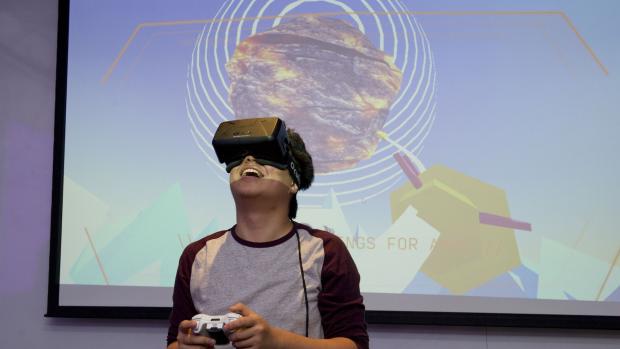NYU Researchers Are Helping Untether VR/AR Gaming

With funding from Sony, researchers at NYU Tandon will explore Wifi networks that allow more seamless movements and experiences while wearing VR headsets, with no disruptions or dropped wireless signals.
Imagine you’re in the cockpit of an X-wing starfighter battling in the far reaches of space or toiling to save a group of scientists who’ve been somehow sucked into an alien world. Now, imagine that wires keep you tethered so close to your gaming console that those illusions — painstakingly rendered thanks to virtual reality (VR) technology — lose much of their power to transport you from your living room to the cosmos.
Researchers at the NYU Tandon School of Engineering recently won funding from Sony, makers of the popular PlayStation system and accompanying VR headset, to explore the potential of a 60 gigahertz (GHz) WiFi home entertainment network that would allow players to seamlessly move about while wearing the headset, with no disruptions or dropped wireless signals.
Shivendra Panwar, who heads Tandon’s Department of Electrical and Computer Engineering and directs the school’s New York State Center for Advanced Technology in Telecommunications (CATT), is the principal investigator on the team, which also includes professors Sundeep Rangan (who directs the NYU WIRELESS research center), Yong Liu, and Pei Liu.
They will be working to address the fundamental problems and trials inherent in deploying wireless local-area networks (LANs), which span small areas such as individual rooms or buildings, in the 60 GHz millimeter wave (mmWave) range. While there is a large swath of the wireless spectrum available in that range, higher frequency waves have difficulty penetrating obstacles like walls and floors — a decided disadvantage for a user playing a complex video game requiring large amounts of data and prone to frustrating periods of latency (the delay before data representing scenes is transferred to the headset), which can cause discomfort similar to motion sickness in VR viewers.
Panwar and his colleagues will be conducting dynamic directional measurements in real-life scenarios that take into account factors such as structural obstacles, body placement, and orientation of the gaming system, in order to devise useful channel models. They will also be focusing on the multipath transmission of signals, in order to increase throughput and decrease interruptions.
It was at NYU that researchers first proved that the high-frequency mmWave radio-wave spectrum could help fulfill the urgent need for faster and greater wireless data capability, and the school has been at the forefront of channel modeling for 5G applications. Panwar points out, however, that setting up the real-life scenarios needed to conduct the studies poses something of a challenge. “It’s easy to recruit participants who want to try out the VR headsets,” he says, “but it’s surprisingly difficult to find an actual test living room for our measurements in a university environment.”




